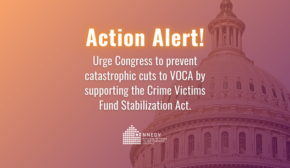Honoring National Native HIV/AIDS Awareness Day
March 20, 2016
Today, March 20th, marks National Native HIV/AIDS Awareness Day. Native women are victims of domestic and sexual violence at a higher rate than the rest of the population, increasing their chance of becoming HIV-positive.
While less than 1% of new HIV infections in the United States were among Native Americans in 2010, [1] Native Americans face specific challenges to receiving the care they need. Native Hawaiian/Other Pacific Islanders (NHOPI) have the third highest rate of new HIV infections (22.85 per 100,000), followed by American Indians/Alaska Natives (AI/AN) (11.9 per 100,000); of all individuals who are diagnosed with AIDS, AI/AN have the shortest overall survival time. [2]
Small, tightknit communities may make it difficult for individuals to receive testing, HIV care, and condoms to prevent transmission. Sixty-nine percent of AI/AN women diagnosed with HIV acquired the virus through heterosexual contact. [1] Inability to negotiate condom use in a violent relationship and rape greatly increases a woman’s chance of acquiring HIV. This is of particular concern, considering 34 percent of Native women will be raped and 39 percent will experience domestic violence in their lifetime. [3]
Additionally, due to centuries of abuse by the United States government and systemic racism, Native women and men often distrust government health care facilities and the federal government as a whole. Concerns over confidentiality and quality-of-care influence AIs/ANs and NHOPIs not to seek testing or supportive services. [1] Culturally-specific economic, social, or cultural beliefs can create additional barriers to receiving accurate information on HIV/AIDS. [4] Preconceived notions about AI/AN or NHOPI culture may also influence non-Native healthcare providers, possibly compromising the health and safety of AI/AN or NHOPI living with HIV.
Unfortunately, it is likely that the data collected is an underrepresentation of actual rates of HIV among Native Americans. This may be due in part to Native Americans being misidentified or data only collected for individuals that live on tribal lands or reservations.
Take this day to learn more about the intersection of domestic violence and HIV/AIDS at NNEDV.org/PositivelySafe.
—
[1] Center for Disease Control. (2015). HIV among American Indians and Alaska Natives in the United States. http://www.cdc.gov/hiv/pdf/risk_AIAN_finalfactsheet.pdf
[2] National Native HIV/AIDS Awareness Day. (2011). NNHAAD HIV/AIDS Fact Sheet. http://www.cdc.gov/hiv/pdf/risk_AIAN_finalfactsheet.pdf
[3] Futures Without Violence. The Facts on Violence Against American Indian/Alaskan Native Women. https://www.futureswithoutviolence.org/userfiles/file/Violence%20Against%20AI%20AN%20Women%20Fact%20Sheet.pdf
[4] Advocates for Youth. (2011). HIV and Young American Indian/Alaska Native Women. http://www.advocatesforyouth.org/publications/publications-a-z/439-hiv-and-young-american-indianalaska-native-women





